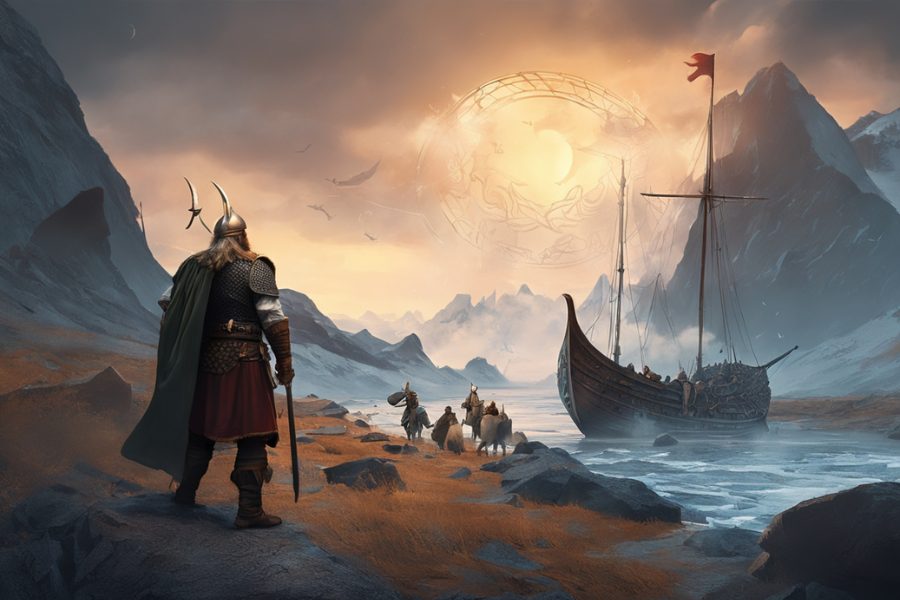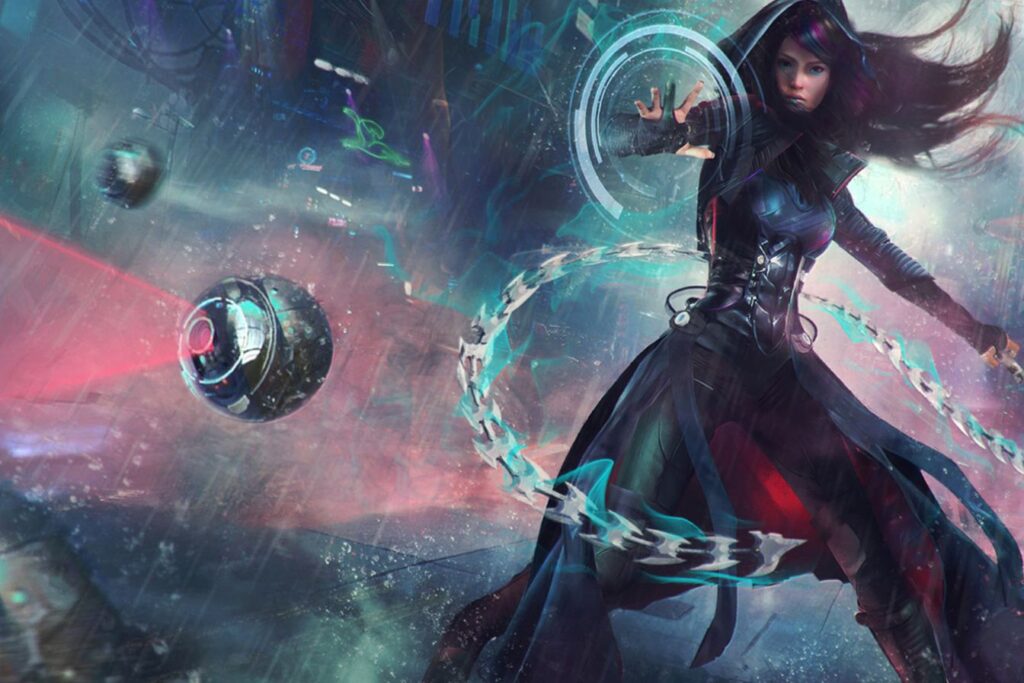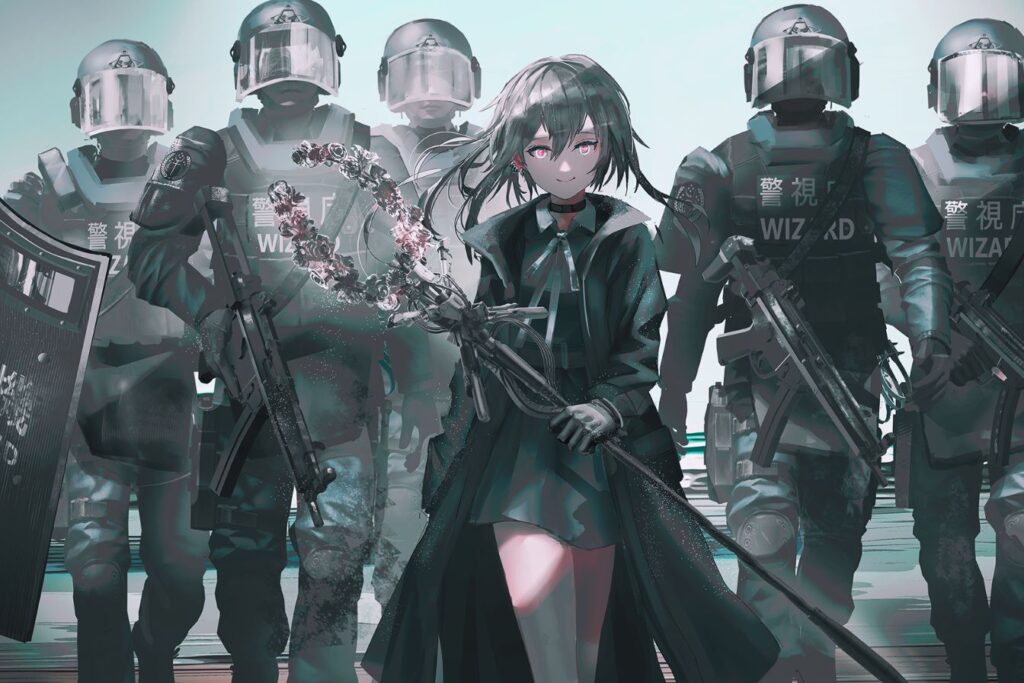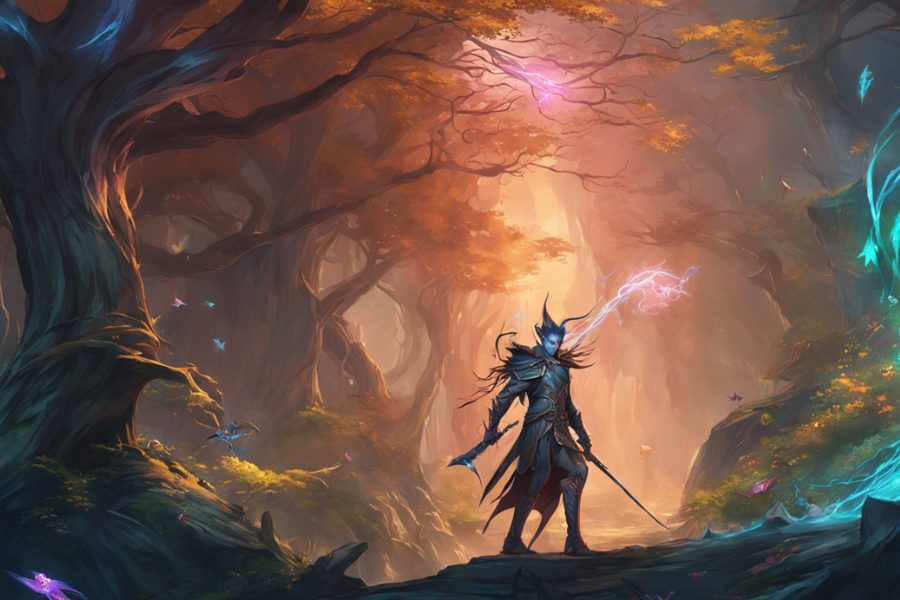From Blank Page to Brilliance: 5 Secrets of Narrative Design Mastery
Greetings and salutations!
My name is Darrus Myles Jr., and I’m thrilled to share my journey with you. As a dedicated writer, I have an insatiable passion for the imagination and the unknown, particularly within the realm of sci-fi fiction. From an early age, I was captivated by the boundless worlds and intricate characters that only fiction can offer.
My professional journey began in programming, where I developed a robust foundation in logical thinking and problem-solving—skills invaluable in any creative endeavor. However, I found programming increasingly tedious due to its rigid structure and limitations. Everything adhered to a foundation, leaving little room for deviation. To satisfy my creative craving, I made a change. I combined the logical structuring of programming with the boundless openness of fictional writing and began my journey as a Narrative Designer nearly seven years ago.
As both a Narrative Designer and Creative Writer, I strive to blend the precision of my technical skills with the boundless creativity of fiction writing. My unique background allows me to craft stories that are engaging, immersive, and painstakingly constructed. I’m not one to follow the conventions of standard creative writing, nor do I adhere to the strict structuring of narrative design. This approach frees my storytelling from traditional bindings, allowing for unexpected and innovative narratives.
I love exploring the vast possibilities of speculative fiction, pushing the boundaries of what we believe to be possible, and delving into the depths of the unknown. In the realm of Narrative Design, creative writing offers limitless possibilities and the freedom to explore uncharted territories. This fusion of technical precision and imaginative exploration defines my work, allowing me to create experiences that resonate deeply with audiences.
Thank you for joining me on this journey through Narrative Design. I appreciate the opportunity to share my insights on this topic, and I’m honored to do so.
Hooking Your Audience

To truly hook your audience, you need to make sure it’s in deep so they can’t get free of your narrative. Focus on crafting characters who are as unforgettable as they are eccentric. Introduce someone with a quirky habit, an odd predicament, or a personality that’s delightfully off-kilter—something that immediately grabs attention and leaves your audience itching to know more about this fascinating individual. Typically, a protagonist or someone linked to them is a fantastic target for this premise.
Next, stir up emotions—whether it’s empathy, admiration, amusement, or even disdain. Yes, you read that right. Distain. Think Homelander from The Boys. Drop your character(s) into situations that solicit some strong emotion from your audience. Maybe they face a tough challenge with surprising finesse or reveal a vulnerability that humanizes them in unexpected ways. This emotional connection is like a drug, addicting your audience and making them care deeply about what happens next. Drama is king.
To deepen this connection, sprinkle in tantalizing glimpses of their backstory. These moments not only flesh out the character but also serve to build your world, hinting at larger mysteries and future developments. As you unveil these snippets of history, motivations, or hidden desires, you keep your audience guessing and eagerly anticipating what’s to come. This blend of character development and world-building not only enriches your narrative but also ensures that your audience remains invested in uncovering the next chapter of this captivating story. Trust me, you want them to remember that final chapter as a result, ensuring your story lingers in their minds long after they’ve put it down.
Lastly, understand that even one strong character can be the glue that keeps your audience hooked. Whether they’re a protagonist or a quirky sidekick, their presence can stop a reader from turning the page too quickly, prevent a listener from hitting skip, or keep a viewer from closing the book—or game.
Mastering Plot Development
When it comes to crafting an engaging plot, I often find that hitching the wagon to character development is like adding turbo boosters to a storyline. Characters aren’t just players on a stage; they’re the engine that drives the entire narrative. When you hit a roadblock in plotting, zoom in on how each twist, turn, or calamity affects your characters personally. Maybe a sudden inheritance shakes up their worldview, forcing them to reassess their priorities or a chance encounter sparks a journey of self-discovery that propels the plot forward in unexpected ways.
This approach isn’t just about making characters dance to the plot’s tune—it’s about letting their quirks, fears, and growth spurts shape the story’s evolution naturally. Whether it’s a quirky sidekick’s sudden revelation or a protagonist’s bizarre phobia that becomes a pivotal plot point, these distinctive characteristics add layers of authenticity and intrigue. Readers or viewers appreciate narratives where characters’ actions and decisions feel genuine, driving the plot in directions that surprise and delight without losing sight of the story’s core themes.
At the end of the day, weaving plot intricacies around character quirks isn’t just a storytelling hack; it’s a recipe for narrative magic. It ensures that every twist and turn resonates emotionally, keeping the audience hooked from the first page to the last credits. By embracing characters’ quirks and developmental arcs, you not only create a memorable story but also forge connections with your audience that linger long after they’ve closed the book or left the theater. The best thing is that it doesn’t matter how insane or wacky the scenario is. As long as it comes across naturally, your audience will eat it up. See One Piece, as a live example.
Effective World-Building Strategies

When it comes to crafting a captivating world, I use a quirky yet powerful trick: weave it intricately into your characters’ backstories. Picture a universe where every oddball hobby, childhood obsession, or bizarre family tradition isn’t just a footnote but a cornerstone of the world’s fabric. Imagine how a character’s knack for deciphering ancient runes might uncover forgotten prophecies or how their peculiar taste in fashion could spark a cultural revolution in a steampunk metropolis.
By melding world-building with character backstories, you transform your setting into more than mere scenery—it becomes a dynamic force that shapes the characters’ lives and decisions. Whether it’s a quirky dialect spoken exclusively by time-traveling bards or a fascination with mystical herbs that leads to unexpected alliances, these eccentric details infuse your narrative with lasting charm and unpredictability. Readers or viewers are invited into a universe where every peculiar nuance and backstory nugget not only enriches the world’s tapestry but also drives the plot forward with purpose and intrigue.
Above all, remember this golden rule: never introduce something in your narrative that doesn’t serve some purpose. The purpose doesn’t need to be obvious to the audience. Actually, it’s often better when it’s not obvious so that you can use it as a surprising plot twist way down the line. Whether it’s a whimsical creature, a quirky tradition, or an arcane artifact, ensure each element contributes meaningfully to the story’s momentum, thematic depth, or character development. This focus on purposeful storytelling not only keeps your audience engaged but also ensures a cohesive and memorable journey through the wonderfully weird realms you’ve crafted.
Techniques for Character Development

Character development is like jazz improv in a symphony—every new riff should riff off something already established. It’s about creating a harmonious flow where each unique twist or serious turn connects back to earlier moments in the narrative. Whether it’s a sudden change of heart or a revelation that turns their world upside down, these moments should resonate with what readers have already encountered, like a well-timed callback in a stand-up routine.
Think of it as planting Easter eggs throughout your narrative garden. When your character blossoms into something unexpected or dives headfirst into chaos, it should stem from seeds planted earlier. Maybe they start quoting obscure philosophy after that peculiar encounter with a street performer or suddenly reveal a hidden talent for solving crossword puzzles that dates back to their lonely nights in college. These connections not only keep the story grounded but also add layers of intrigue and coherence to your character’s growth.
Ultimately, distinct character development tied to earlier story elements is the secret sauce that flavors your narrative stew. It’s what keeps readers flipping pages and players playing, eagerly anticipating the next surprising reveal or strangely fitting personality twist. By embracing the unexpected and weaving it into the familiar, you create characters that feel delightfully unpredictable yet satisfyingly grounded in their journey.
Crafting Meaningful Decisions
Creating choices that pack a punch in interactive experiences is all about ensuring each decision lands with a satisfying wallop. Every option should feel like it carries weight, whether it’s steering the storyline in a new direction, reshaping relationships with characters, or unleashing unexpected gameplay twists. Clarity is key here: players need to grasp the potential outcomes of their choices to fully appreciate their impact on the game world.
Moreover, choices should cater to what tickles the player’s fancy—whether they’re playing the hero, the villain, or something in between. When decisions align with the player’s personal style or strategic inclinations, it cranks up their emotional investment. Plus, meaningful choices can add a layer of replayability as players itch to explore alternative pathways and see how different decisions unfold.
The aftermath of each choice should be juicy enough to make players feel like their decisions truly matter. Whether it triggers a cascade of events, unlocks exclusive rewards, ends the story earlier than expected, or even introduces entirely new elements, the consequences should resonate and make players eager to dive back in for more. Ultimately, crafting meaningful choices boils down to giving players the power to shape their own narrative journey while keeping them on their toes with every decision they make. Remember that a “Choice” is something the player makes. It should have gravity if you want to keep the audience interested in that aspect. For this reason, you may want to consider the choices you add wisely so you don’t tangle your figurative narrative web too much and make your interactive narrative a convoluted mess. It’s a fine line to cross and requires a good bit of effort on your part. But, if you manage it well, I assure you your audience will thank you for the experience.

Darrus’s Work & Experience
In more recent years, I’ve contributed to several engaging projects in the gaming and storytelling realms. One notable endeavor is Grand Guilds, an immersive high-fantasy RPG available on platforms like Steam and Nintendo Switch. The game centers around Eliza Halfort, a once-upright guard captain who returns to her guild, Lux Deus, after years of self-imposed exile. Her return follows a tragic event where she failed to protect her mother figure, Duchess Herta, from a brutal assassination right before her eyes. This traumatic experience marks a turning point for Eliza, driving her to abandon her previous ideals of pacifism and righteousness.
Throughout Grand Guilds, players witness Eliza’s transformation from a virtuous defender into a dark and brooding vigilante. The narrative explores her descent into moral ambiguity as she confronts the harsh realities of her world. No longer bound by her previous reluctance to inflict lasting harm, Eliza becomes unnervingly willing to use deadly force against those she deems as irredeemably evil. This evolution adds a layer of complexity to her character, as players navigate her choices and the consequences of her actions within the morally gray landscapes of Irin.
My role in Grand Guilds involved crafting the script and designing intricate side quests that enrich the player’s experience with compelling narrative arcs and diverse character interactions. By shaping Eliza’s journey and the world around her, I aimed to create an immersive storytelling experience that resonates with players through its emotional depth and moral dilemmas.
Additionally, I contributed to Expedition Agartha, a medieval extraction-focused action game that emphasizes melee combat and loot extraction within a PvEvP environment akin to Escape from Tarkov. My primary focus here was on worldbuilding, where I delved into shaping various factions through detailed character backstories, lore-rich materials like journals and notes, and other collectibles scattered throughout the game world. This approach not only added depth to the gameplay experience but also enriched the overarching narrative tapestry that players could uncover as they ventured deeper into Agartha.
Both Grand Guilds and Expedition Agartha provided unique challenges and opportunities to blend storytelling with immersive gameplay mechanics, allowing players to delve into richly detailed worlds filled with intrigue, action, and discovery. These projects underscore my passion for crafting narratives that resonate with players and enhance their immersion in fantastical and challenging environments.
Writing & Narrative Design Skills
Characters, characters, and, oh, did I mention characters? They’re the shadowy architects of my narrative realm, each one a complex enigma that molds the darker hues of my stories. From the haunted ex-cop grappling with guilt over a past mistake to the elusive hacker who navigates the digital underworld under the guise of a white rabbit with a blend of cunning and moral ambiguity, I specialize in crafting personalities that thrive in the depths of moral ambiguity and psychological intrigue.
In my narrative playground, characters aren’t just figures on a stage; they’re the defining weavers of the moral fabric that defines every twist and turn. Their hidden agendas, haunted pasts, and moral dilemmas shape the very foundations of everything else in my narratives. Whether they walk the line between heroism and villainy with chilling precision or struggle with inner demons that threaten to consume them every time they utter a word, each character brings a richness of depth and conflict that propels the narrative forward.
These characters, with their dark complexities and compelling motivations, are the catalysts for the intense drama and emotional depth that pervade my narratives. They challenge readers to confront the blurred lines between right and wrong, sanity and madness, and hope and despair. Through their journeys, whether navigating treacherous alliances or confronting personal demons, they invite readers to explore the gritty underbelly of human nature and the haunting truths that lie beneath the surface of every story.
For me, each character is a stage adorned with its own props and inner actors. When these characters interact, their stages meld, expanding and enriching the world that unfolds before the audience.
Exploring Favorites

My favorite story is easily the narrative told by Tales from the Borderlands.
Tales from the Borderlands isn’t just a game—it’s a wild rollercoaster through Pandora with characters that are as unpredictable as the loot drops from its parent game series, Borderlands. Among them stands Loader Bot, who starts off as your average mechanical sidekick but ends up stealing the show in ways no one saw coming.
At first glance, Loader Bot seems like just another cog in the vast, chaotic machinery of Pandora. No fancy name, no flashy backstory—just a robotic companion doing its thing: loading cargo. But as the story unfolds, this mechanical marvel evolves into a symbol of heroism, loyalty, and unexpected depth.
What sets Loader Bot apart is its journey from a quirky disruptor to a crucial player in the game’s narrative. Initially popping up at the most inconvenient times with a blend of chaos and humor, Loader Bot eventually becomes a linchpin in the emotional and thematic core of the story. Without giving too much away (spoilers are worse than a bad Claptrap joke), Loader Bot’s transformation challenges stereotypes and digs deep into questions of identity and purpose.
In Tales from the Borderlands, character development isn’t just a side quest—it’s the main storyline. Loader Bot’s evolution from a face in the crowd to a fully-fledged character with a lasting impact showcases the game’s mastery in crafting personalities that stick with you long after you’ve put down the controller. It’s a reminder that in the world of gaming narratives, sometimes the most compelling stories come from the unlikeliest places—like a quirky, evolving cargo-loading robot in a chaotic world.
A Wish for Interactive Audio Stories
You know, if I could make a wish for an interactive audio story, it’d be set smack dab in the Mass Effect universe, right on The Citadel. You know, that colossal space station where everything and everyone from across the galaxy collides in a chaotic symphony of life? As much as I loved saving the universe as Commander Shepard, I’ve always wondered about the everyday folks who keep that place running smoothly. It’s huge and full of people! Surely, there’s a story or two to be told there.
Picture this: stepping into the boots of a guard or a civil servant on The Citadel. Your job? Not just preventing the occasional bar fight or keeping an eye out for suspicious characters (though that’d be part of it), but also navigating the complex web of intergalactic politics and cultural clashes. Imagine making choices that affect how you handle diplomatic incidents or uncovering secrets that could shake the station to its core—all while hearing the buzz of alien chatter and the hum of futuristic tech in your ear.
Interactive audio would really amp up the immersion. You’d hear the quirky banter of different species in the markets, the whoosh of transport shuttles zipping by, and maybe even catch whispers of rumors that could change everything. It’s not just about exploring The Citadel as a backdrop for epic quests anymore; it’s about diving deep into the lives and dilemmas of those who call it home.
Ah, but is this nothing more than a pipedream? I sure hope not *wink* *wink*.
Register for our Free Writing Workshop now!
If you are interested in creating your own interactive audio story, you can apply for our free webinar! It will introduce you to our interactive story game engine, TWIST, and teach you how to use it to create interactive audio stories.
Interested in contributing to our blog series?
If you would also like to publish a blog post on our website and share your own story with interested readers, simply fill out the contact form.





